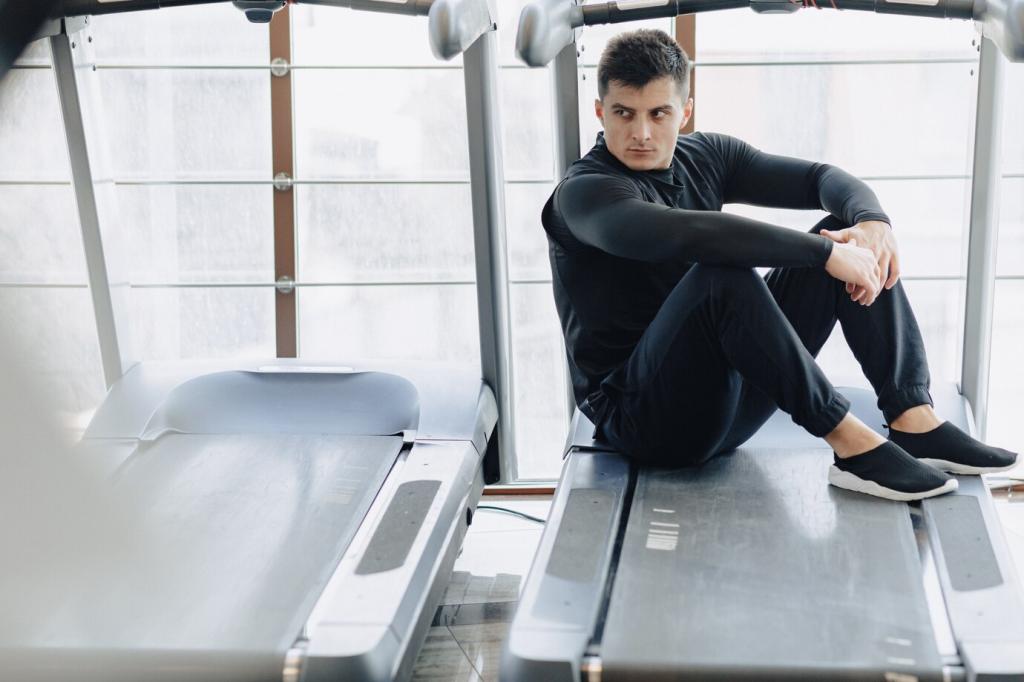Chosen theme: Tailoring Fitness Routines for Beginners. Welcome! This is your friendly launchpad for building a personal, sustainable routine that fits your life, energy, and goals. Read on, save ideas that resonate, and subscribe for gentle nudges, simple plans, and real beginner wins.
Know Your Starting Line
A five-minute self-check
Set a timer and check a few basics: how many comfortable sit-to-stands you can do in one minute, your easy walking pace for five minutes, and how you feel afterward. Note breath, muscles, and mood. Share your baseline in the comments to inspire other beginners.
Clarify your why
Write one personal reason you want to move more, one daily life task you want easier, and one fun activity you miss. Your routine will reflect these, so every session serves your values. Drop your “why” below, and let’s cheer for it together.
Beginner metrics that matter
Track consistency, not perfection: minutes moved, sessions completed, and how hard things felt using a simple 1–10 effort scale. These guide smart adjustments better than any single number on a scale. Comment with your chosen metric and we’ll help you refine it.


Designing Your First Week
Base your week on three pillars: gentle cardio, full‑body strength, and mobility. Think brisk walks, bodyweight or band moves, and short stretch breaks. Pillars keep your plan balanced without overthinking. Tell us which pillar excites you most, and we’ll suggest starter ideas.
Designing Your First Week
Try this: Day 1 full‑body strength, Day 2 walk and mobility, Day 3 strength again. Keep sessions 20–30 minutes, leave one rest day in between, and stop with two reps in reserve. Save this template and adapt times to your week for confidence you can count on.
Form, Safety, and Confidence
Warm‑up that works
Spend six to eight minutes on easy marching, shoulder circles, hip hinges, and ankle rolls. Then do lighter versions of your main moves. Warm muscles feel safer, and your mind settles into the session. Share your favorite warm‑up song to energize fellow beginners.
Technique cues you can trust
For squats, think sit back, knees track over toes, chest tall. For hinges, keep ribs down, push hips back, neutral spine. For rows, pull elbows toward your back pockets. Record a short clip for yourself; simple cues turn nerves into confidence quickly.
Stoplight system for pain
Green means normal effort and warmth. Yellow is discomfort that eases when you adjust tempo or range. Red is sharp pain or dizziness—stop and regress. This system helps beginners tailor intensity without fear. Comment a movement you’re unsure about, and we’ll suggest alternatives.
Cardio and Strength, Tailored for You
Finding your cardio sweet spot
Aim for a conversational pace where you can speak in sentences but not sing. That’s effort 4–6 out of 10. Try intervals of two minutes brisk, one minute easy, for fifteen minutes total. Share your favorite walking route or playlist to keep motivation high.
Strength basics with bodyweight and bands
Start with two sets of eight to ten reps of supported squats, wall or counter push‑ups, band rows, and hip hinges. Rest a minute between sets. When the last two reps feel smooth, add a rep or slow the tempo. Celebrate each controlled, confident repetition.
Story: Maya’s first month
Maya began with ten‑minute walks and one set of bodyweight basics. She logged feelings, not just numbers. By week four, she climbed stairs without stopping and slept better. Her secret was consistency, not punishment. Comment “Go Maya!” if her story gives you courage today.
Recovery, Nutrition, and Energy
Fuel without fuss
Use a plate method: half colorful produce, a quarter lean protein, a quarter smart carbs, plus a sip of healthy fats. Small snack ideas include yogurt and berries or a banana with peanut butter. Share your easiest, tasty, ten‑minute meal to inspire the community.
Hydration habits that stick
Keep a bottle visible, sip before thirst, and add a pinch of salt or electrolytes on sweaty days. Pale straw‑colored urine usually signals adequate hydration. Beginners often confuse fatigue with low fluids. Comment your favorite water reminder hack to help another reader.
Sleep as your secret coach
Aim for a consistent bedtime, dim lights an hour earlier, and keep your room cool and quiet. Even fifteen extra minutes improves recovery and mood. What’s one wind‑down ritual you’ll try tonight? Share it and come back tomorrow with how you felt.
Progress Without Pressure
Increase only one variable by about ten percent: add a rep, a set, or a few minutes of cardio. Keep one easy week every three or four to consolidate gains. Beginners thrive on gentle progress. Tell us which variable you’ll tweak next week and why.
Progress Without Pressure
If motivation dips, joints feel cranky, or life gets hectic, shift to shorter sessions, reduce range of motion, or swap movements. Adjustments are wisdom, not failure. Comment a barrier you face this week, and we’ll suggest a small, kind modification together.
Stay Accountable and Connected
Use a paper habit grid, a simple notes app, or an index card on your fridge. Log session type, minutes, and effort. Add a mood emoji. Tracking shows patterns you can tailor to. Comment your preferred method and we’ll send a beginner‑friendly template.
